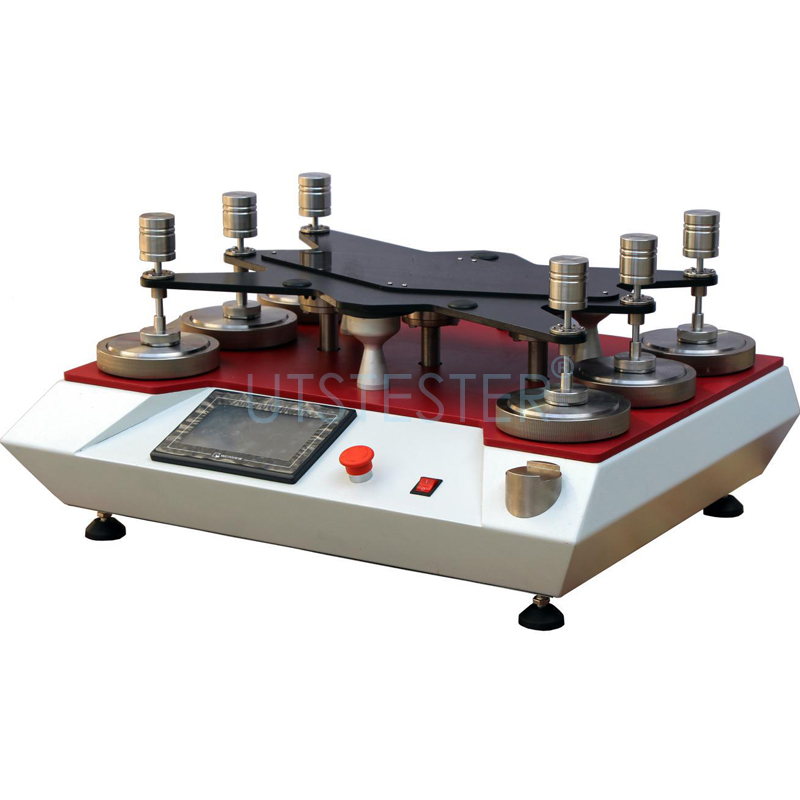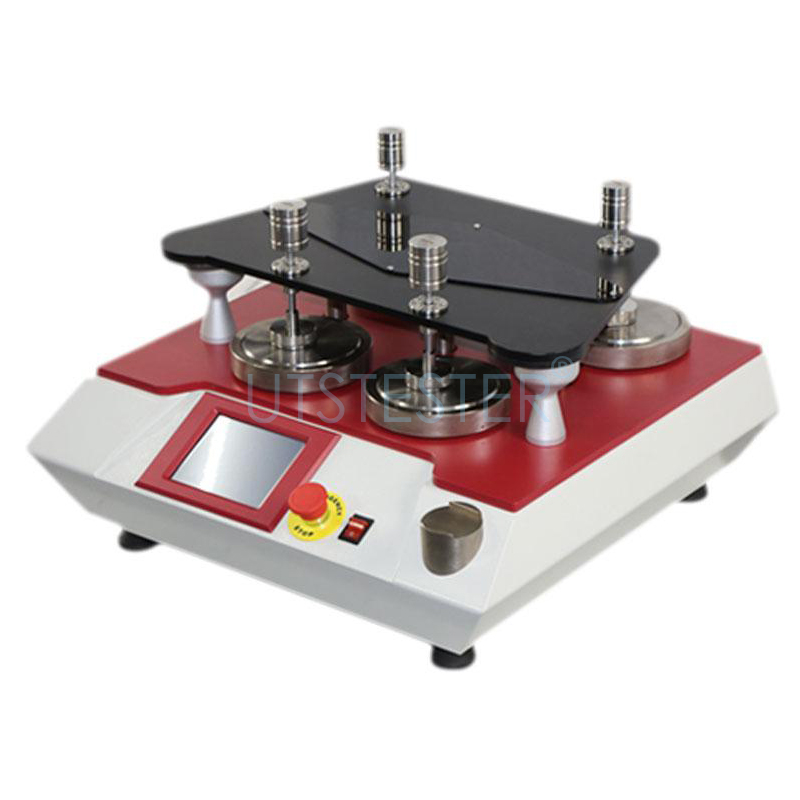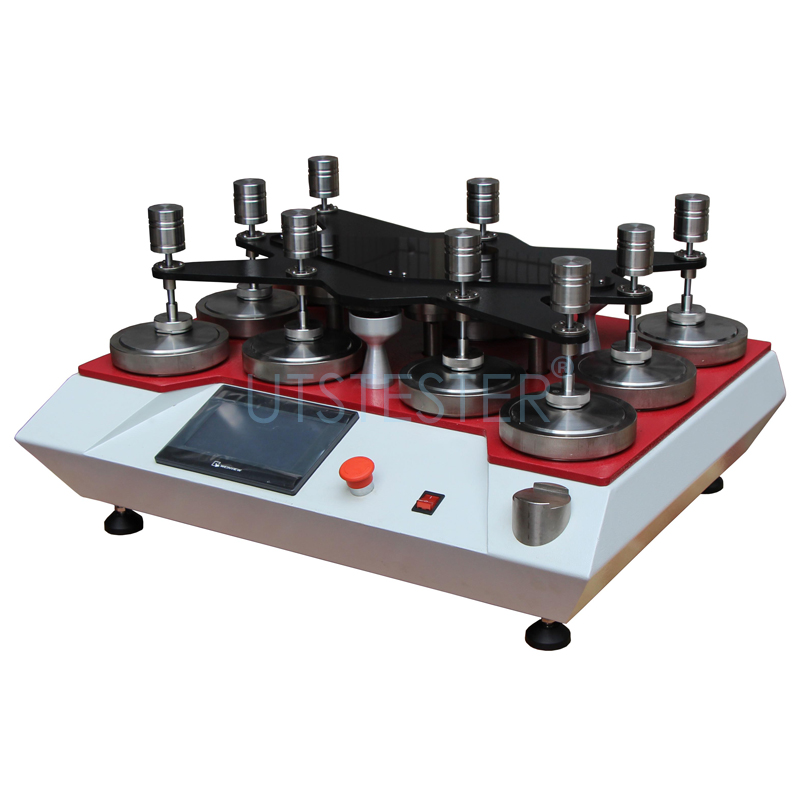 +86 152 6060 5085
+86 152 6060 5085
 +86 152 6060 5085
+86 152 6060 5085
2018-11-06
There are three methods to determine the wear resistance of martindale fabric: sample damage, mass loss and appearance quality change. Among the three methods, the method of sample damage measurement is commonly used. This method has small error and the test results are intuitive and clear. It is easy to compare the wear resistance of different fabrics. Mass loss measurement and the appearance quality of testing results of change law of representation is more complex, but can reflect the different stages of friction wear condition of sample, fabric production enterprises or research institutes in the analysis, has the strong practical wear-resisting performance is an important indicator of quality of textile products, directly affect the durability of the product and use effect. Specifically refers to the fabric or other materials in the repeated friction process, wear resistance.

Wear of textile products is mainly shown in the following aspects:
First, the fibers constantly collide with each other in the friction process, and the fiber fragments in the yarn break due to fatigue damage.
Second, the fibers are drawn from the fabric, causing the yarn and fabric structure to loosen, and the fibers may be pulled out completely under repeated action, resulting in the yarn becoming thinner, the fabric becoming thinner, or even disintegrating.
Third, the fibers are cut and broken, causing the yarn to break.
Fourth, the fiber surface wear, fiber surface debris loss.
Fifth, friction produces high temperature, which makes the fiber melt or plastic deformation, and affects the structure and mechanical properties of the fiber. The abrasion is mainly in the form of damage, quality loss, appearance discoloration, pilling and other changes.
There are many methods to test the wear resistance of textile products, such as plain grinding, curved grinding, folding grinding and compound grinding. Martindale method is a kind of plain wear method, which is widely used in the abrasion test of clothing, home textiles, decorative fabrics and furniture fabrics.
Plain wear is the test sample with a certain form of motion for plane friction, simulation of the sleeve of clothing, hip, soles, and other wear patterns.

During the test, the test sample of a certain size will be in contact with the standard abrasive under the specified pressure, and the sample will be subjected to uniform wear in multiple directions with the lisa-like trajectory relative to the abrasive. There are three commonly used methods to evaluate the wear resistance index, namely endpoint method, mass loss method and appearance change method.
1. End point method:
When two yarns of woven fabrics with different warp and weft break and one yarn of knitwear break, a hole of not less than 0.5mm appears in the nonwovens. The fleece of the raised fabric is all worn out, and the friction number is recorded as the wear resistance index.
2. Quality loss method:
Before the test, the sample is called mass A, and after A certain number of friction times, the sample is called mass B, then the mass loss is a-b, or the mass loss percentage (a-b) /A x 100% is used as the wear resistance index.
3. Appearance change method:
After a certain number of times of friction, the test sample is observed to change its appearance, such as color change, whether there is pilling phenomenon, wear degree and so on.
In addition, the effect of yarn and fabric structure on wear resistance should be carefully considered in the process of spinning and fabric design. If the yarn and fabric structure is not selected properly, even the fiber with good abrasion resistance cannot be spun into yarn and fabric with good abrasion resistance. On the contrary, if proper yarn and fabric structure is selected, the fiber with poor abrasion resistance can be made into fabric with good abrasion resistance.
The martindale wear tester is applicable to the test of wear resistance and pilling degree of knitted, woolen, artificial leather and synthetic leather under pressure.

Martindale wear tester principle:
1. Under certain pressure, circular fabric samples rub against each other with standard abrasives according to the movement trajectory of Lissajous curve, resulting in the sample damage. The wear resistance of the fabric is expressed by the wear resistance times of the sample damage.
2. The circular sample and the fabric of the same material shall be rubbed with Lissajous figure movement track under the given pressure, and the pilling grade of the sample shall be assessed after reaching the specified revolution.
Martindale wear tester steps:
1. Cut a sample at the flat part of the sample. If the sample is insole, it should be cut to the transfer part;
2. Remove the load and load shaft from the test machine;
3. Remove the top plate and test fixture;
4. Sample device: loosen the fixation ring on the test fixture, take down the sample pressure plate, put the sample into the test fixture base, place a sample gasket between the sample and the test fixture base, and then place the sample pressure plate on the sample gasket and fix it with the fixing ring;
5. The device of wool felt and friction cloth: loosen the fixing screw to fix the ring, put the wool felt on the base and then spread the friction cloth, press the 2.5kg pressure plate on the friction cloth in the middle and middle, install the fixing ring and tighten the fixing screw;
6. Install the top plate, push the load shaft (12KPA) through the round hole of the top plate;
7. Place the test fixture equipped with the sample face down on the base fixture, adjust the circular groove of the test fixture to align with the load shaft, and make the load shaft insert into the circular groove of the test fixture;
8. Start the switch according to the standard set times, start the test, and stop automatically after reaching the set times.
Email: hello@utstesters.com
Web: www.utstesters.com
Tel: +86 7686689
Direct line: +86 15260605085